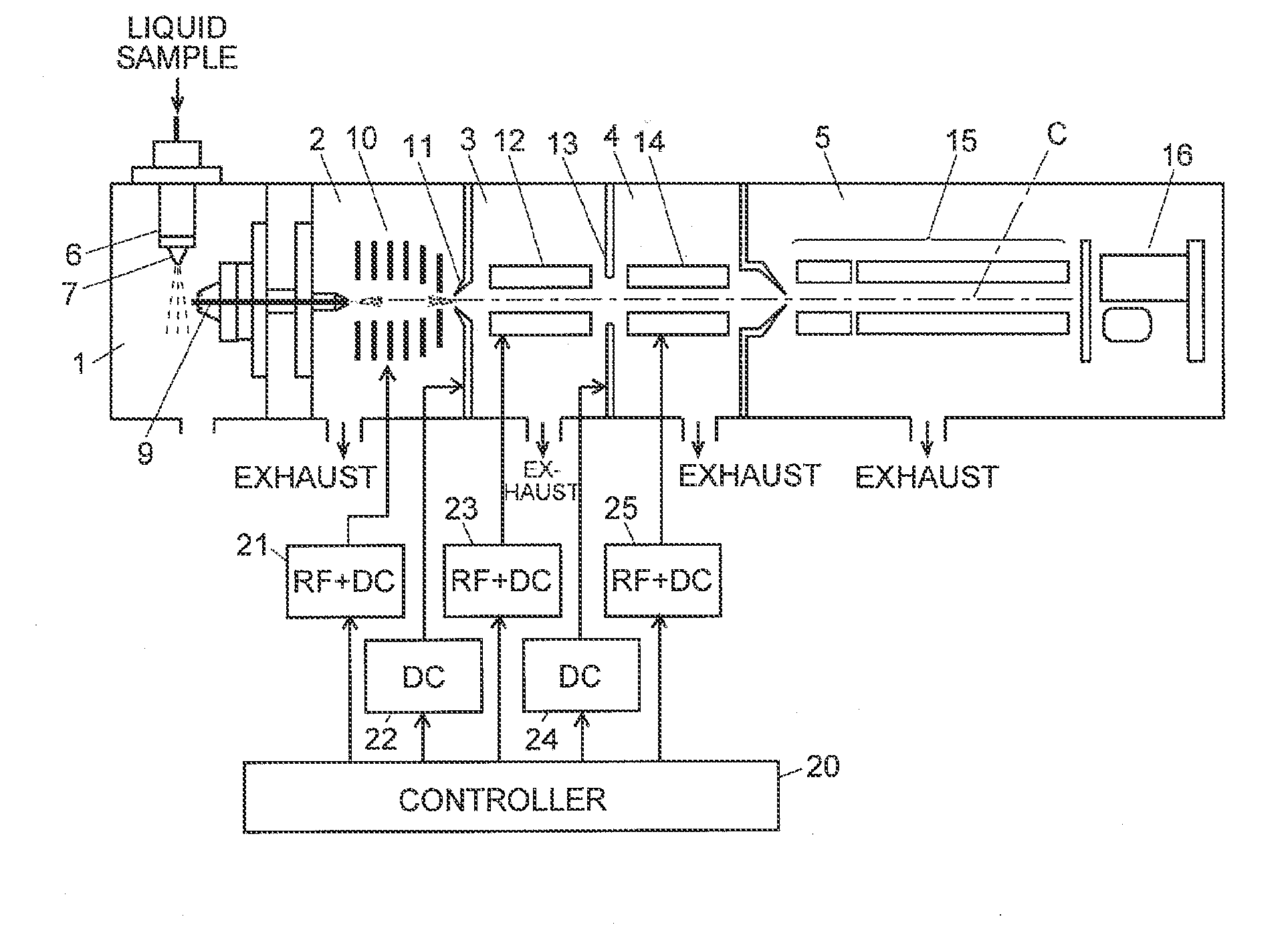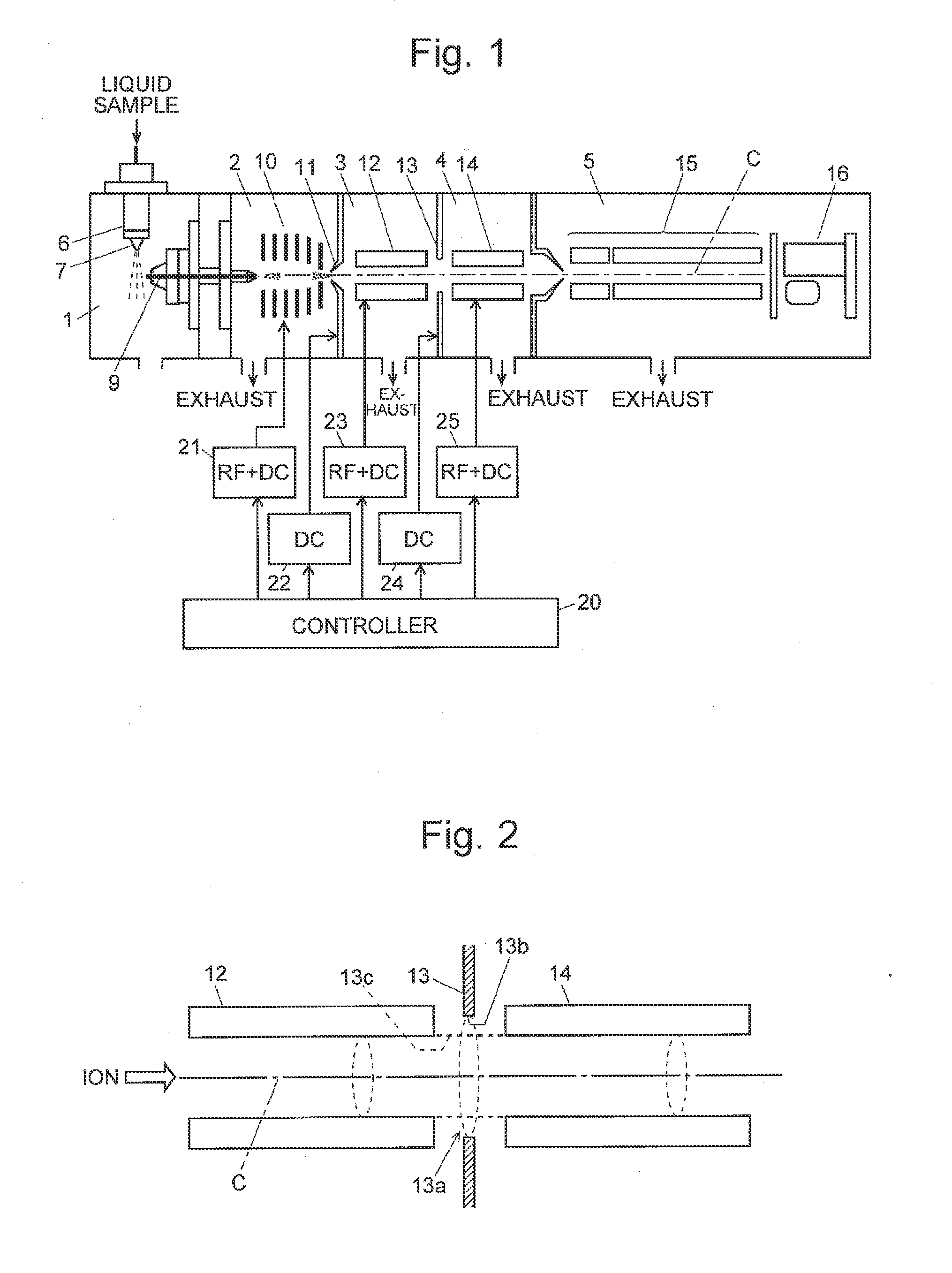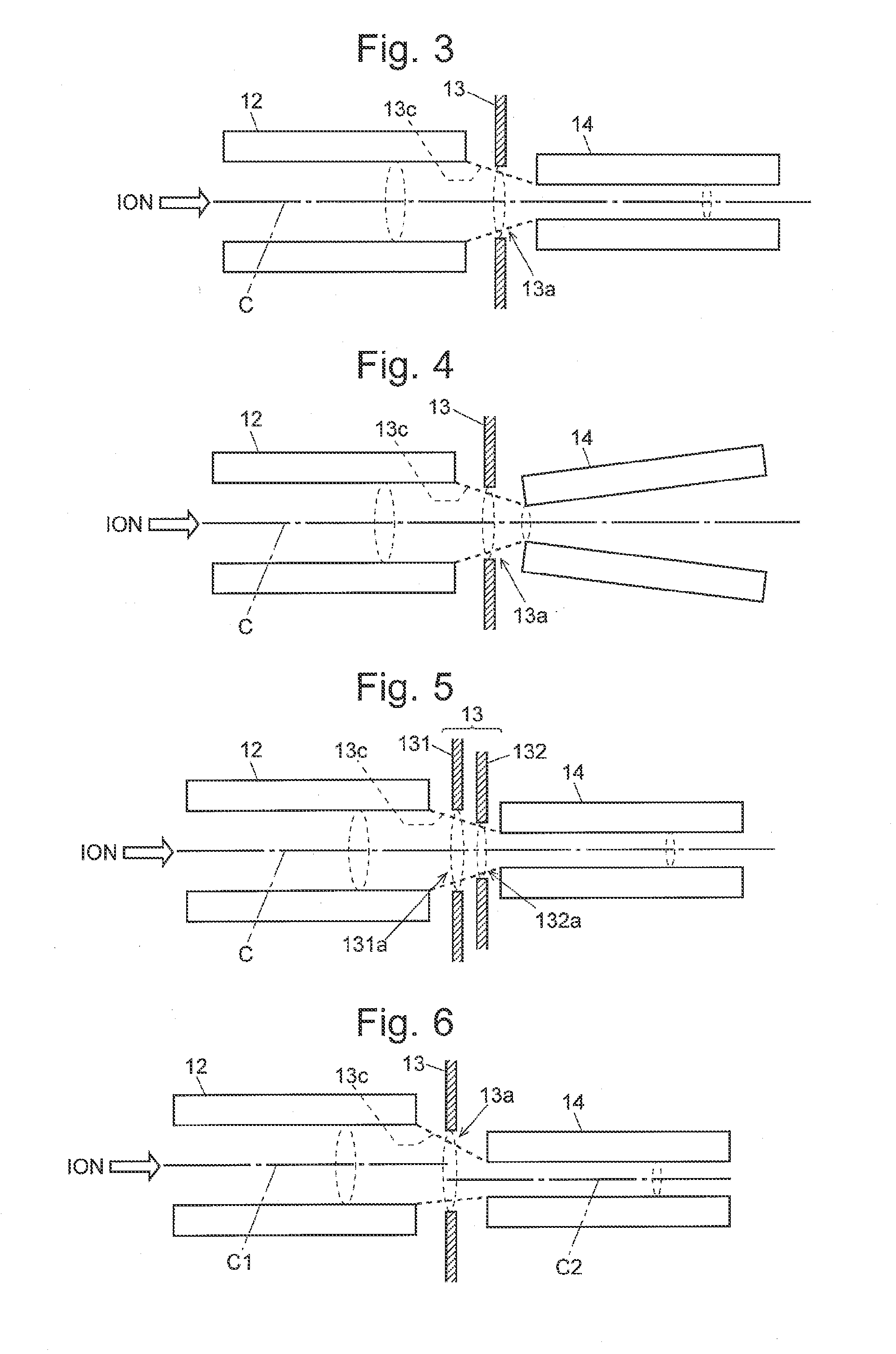Mass spectrometer
a mass spectrometer and mass spectrometer technology, applied in the field of mass spectrometers, can solve the problems of reducing the transmission efficiency of ions and lowering the maintenance efficiency, and achieve the effect of improving the detection sensitivity and improving the ion transmission efficiency
- Summary
- Abstract
- Description
- Claims
- Application Information
AI Technical Summary
Benefits of technology
Problems solved by technology
Method used
Image
Examples
first embodiment
[0037]FIG. 1 is a schematic configuration diagram of a mass spectrometer according to the first embodiment, and FIG. 2 is a schematic configuration diagram of an ion transport optical system including ion guides and an ion lens characteristic of the mass spectrometer of the first embodiment.
[0038]The atmospheric pressure ionization mass spectrometer of the present embodiment includes an ionization chamber 1 maintained at approximately atmospheric pressure, an analyzing chamber 5 maintained in a high vacuum state by evacuation using a turbo-molecular pump or similar vacuum pump (not shown), as well as a first intermediate vacuum chamber 2, a second intermediate vacuum chamber 3 and a third intermediate vacuum chamber 4 each of which is maintained at an intermediate gas pressure between the gas pressure in the ionization chamber 1 and the gas pressure in the analyzing chamber 5 by evacuation using a vacuum pump. That is to say, the present atmospheric pressure ionization mass spectrom...
PUM
 Login to View More
Login to View More Abstract
Description
Claims
Application Information
 Login to View More
Login to View More - R&D
- Intellectual Property
- Life Sciences
- Materials
- Tech Scout
- Unparalleled Data Quality
- Higher Quality Content
- 60% Fewer Hallucinations
Browse by: Latest US Patents, China's latest patents, Technical Efficacy Thesaurus, Application Domain, Technology Topic, Popular Technical Reports.
© 2025 PatSnap. All rights reserved.Legal|Privacy policy|Modern Slavery Act Transparency Statement|Sitemap|About US| Contact US: help@patsnap.com



